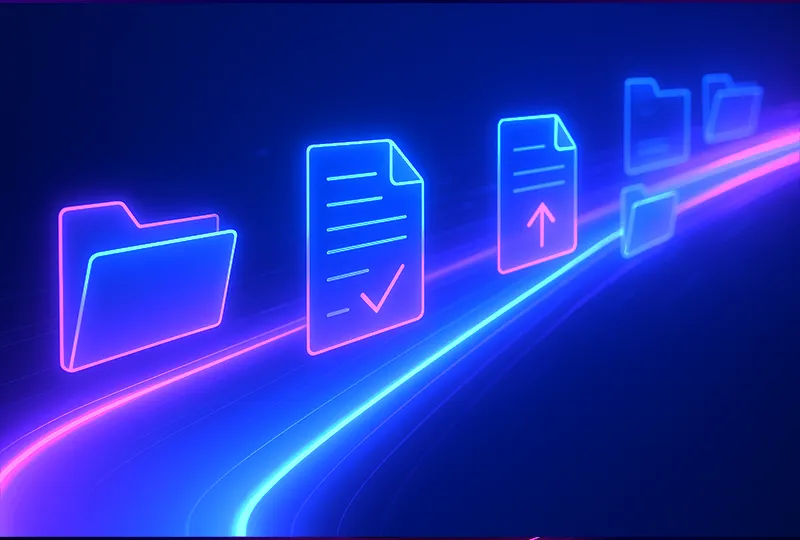
Why Do Web Development Projects Face So Many Challenges and How Can They Be Solved?

Web development projects often face challenges because they involve multiple moving parts, from design and coding to client communication and content delivery. Each stage requires coordination between different people, tools, and expectations, which makes it easy for miscommunication, delays, or technical issues to arise if the process is not managed properly.
These challenges do not mean the project is doomed. They are often a sign that systems or workflows need refining. When businesses plan strategically, set clear expectations, and maintain open communication, most of these issues can be prevented or resolved early. The key lies in strong project management, structured processes, and collaboration that keeps everyone accountable and aligned.
To help you navigate these complexities, let us explore the most common challenges that occur in web development projects and, more importantly, the practical solutions that can keep your next project on track from start to finish.
Managing Tight Deadlines and Shifting Priorities
Delivering a website under pressure is one of the biggest challenges for both developers and clients. New ideas often arise mid-project, priorities shift, and the original schedule begins to stretch. When this happens, stress builds, progress slows, and both sides risk burnout or miscommunication, leading to missed opportunities and extended timelines that impact the entire business.

How to Stay on Track
Keeping a project on schedule begins with setting clear expectations from the outset. Timelines should be realistic, with defined milestones and built-in flexibility for minor changes. Teams should also communicate openly about potential obstacles before they become bottlenecks. Regular check-ins and transparent reporting help ensure everyone stays aligned and accountable throughout the process.
So, what are some simple ways to make sure your project stays on track?
- Create a shared project roadmap visible to all stakeholders.
- Include revision time in your schedule to accommodate feedback.
- Use weekly progress updates to identify and resolve issues early.
If you want to plan timelines that keep your project moving without unnecessary pressure, this guide breaks down how to set realistic development schedules and avoid delays, How To Set Realistic Timelines For Website Development Projects.
People Also Ask
How can I keep a website project on time and within scope?
Define your scope clearly before work begins and use milestone tracking to monitor progress against deadlines.
What should I do if priorities change during development?
Reassess the project timeline immediately and update stakeholders so everyone understands the impact of the change.
Tackling Technical Difficulties and Integration Issues
Even the best-planned projects can face unexpected technical issues such as broken plugins, API conflicts, or incompatible features. These challenges often surface during integration and can slow progress dramatically. Left unchecked, they lead to performance issues or post-launch bugs that damage user experience and trust.
Preventing Technical Setbacks
Preventing problems begins with proactive testing and documentation. Each integration should be carefully reviewed in a controlled environment before deployment. A structured QA process ensures no detail is overlooked, while ongoing maintenance keeps the site stable and secure. Developers should keep detailed notes on system versions, dependencies, and updates for smooth troubleshooting.
How can developers minimise technical problems before a website goes live?
- Test third-party plugins on a staging site before live use.
- Maintain version control to track code changes effectively.
- Use automated testing tools for speed, consistency, and accuracy.
People Also Ask
Why do technical issues occur even after thorough planning?
Because each environment is unique, small compatibility differences can create errors despite preparation. Rigorous QA helps detect them early.
How can integration testing improve website performance?
It ensures all moving parts, from APIs to custom scripts, function together seamlessly without slowing down the site.

Aligning Client Expectations with Project Delivery
Misaligned expectations are one of the most common and damaging pitfalls in web development. A project can appear off-course simply because the client and development team interpret a goal differently. Without clear documentation and communication, assumptions multiply, leading to frustration and wasted time.
Strengthening Communication and Alignment
A strong discovery phase prevents most misunderstandings. It is essential to capture every requirement in detail, confirm it visually when possible, and revisit it regularly as the project evolves. Open, ongoing dialogue between the client and development team ensures that creative and technical decisions stay aligned with the original objectives.
So, how can teams make sure client expectations and project delivery match perfectly?
- Conduct structured discovery sessions before design begins.
- Use visual mock-ups or prototypes to confirm client approval.
- Review project goals at each major milestone to avoid scope creep.
If you want to build smoother, more collaborative projects by setting clearer expectations from day one, this guide walks you through the exact steps to get it right. Ensuring Success. Managing Client Expectations in Web Development.
People Also Ask
Why do client expectations often change mid-project?
As clients see progress, new ideas arise. Regular updates and documented approvals keep adjustments manageable.
How can agencies manage evolving expectations effectively?
Set up checkpoints for reviewing and revalidating project goals throughout development.
Overcoming Content Delays
Content creation can derail even the most organised projects. Copy, imagery, and multimedia often take longer to produce and approve than anticipated. When content is late, design and development cannot move forward, causing an entire timeline to stall, especially if the website structure depends on real content.

How to Keep Content Flowing
Preventing delays requires early planning and hands-on support. Teams should provide clients with clear guidelines, content templates, and deadlines well before development begins. Offering writing or editing help can also accelerate delivery. The aim is to make content production feel manageable, not overwhelming, for the client.
What are the best ways to keep content moving through each project phase?
- Break content into smaller, trackable deliverables.
- Assign ownership of each piece to specific contributors.
- Use a central platform to manage approvals and feedback.
Content delays often happen because assets arrive late or approvals stall. If you want to tighten this part of your process, this article breaks down what to prepare and how to stay ahead. Why Asset Collection and Client Proofreading Are Crucial for Your Website Launch.
People Also Ask
Why is content such a common cause of project delays?
Because it depends on multiple contributors, each with their own schedules and priorities. Clear expectations minimise bottlenecks.
How can I ensure content is ready on time?
Plan content alongside design and development, not after. This keeps progress steady and cohesive.
Maintaining Quality Under Pressure
When deadlines loom, it is tempting to rush. Unfortunately, cutting corners during QA or skipping testing often leads to post-launch problems that cost more to fix. Quality should never be sacrificed for speed, especially when a website represents a company’s credibility and customer experience.
Ensuring Quality Control Every Time
A comprehensive QA checklist protects your work. This includes testing functionality, usability, accessibility, and performance across browsers and devices. Incorporating quality checks into every phase of development rather than leaving them until the end helps teams identify and resolve issues early, saving time in the long run.
So, what can you do to maintain quality when the pressure is on and still deliver a reliable website?
- Test each page on multiple devices and browsers.
- Verify that all forms, CTAs, and links work correctly.
- Run security and speed tests before launch to ensure stability.
People Also Ask
How can I balance quality with tight deadlines?
Start testing early in the process and automate repetitive checks to save time without compromising standards.
What are the top QA priorities before launching a website?
Functionality, performance, and security. Each ensures a seamless and trustworthy user experience.
Final Thoughts
Every web development project comes with its fair share of challenges, but these are also opportunities to build sharper systems, stronger communication, and more efficient workflows. When teams stay disciplined with planning, open with communication, and committed to quality at every stage, they are far better positioned to deliver websites that do more than meet expectations; they outperform them.
At b2b Websites, we’ve seen first-hand how a structured, collaborative approach can turn even the most complex projects into smooth, results-driven experiences. If you want to keep learning and stay ahead of the common pitfalls that slow businesses down, explore more insights in our Media Hub. You will find practical guidance, actionable strategies, and lessons that can help your next project run with far less friction.
And if you are looking at your current website and suspect it is costing you time, leads, or credibility, let’s talk. We specialise in building high-performing B2B websites that help Australian businesses attract the right clients and convert with confidence. Whenever you are ready to elevate your online presence, we’re here to help.
FAQs
1. What is the biggest challenge in managing a web development project?
Balancing scope, deadlines, and expectations. Success depends on defining clear goals early and communicating consistently.
2. How do you prevent delays during development?
Plan content early, document every milestone, and use project management tools to monitor progress daily.
3. Why is QA so critical in web projects?
It ensures the final site performs flawlessly, loads quickly, and delivers a secure, positive user experience.
4. How can agencies improve collaboration with clients?
Through transparency and education. Keeping clients involved and informed empowers better decisions and smoother workflows.
5. What is the best way to handle last-minute changes before launch?
Evaluate the impact carefully, communicate any timeline or budget changes, and prioritise fixes that affect user experience or performance.













%2520-%2520Main%2520Image.jpeg)




